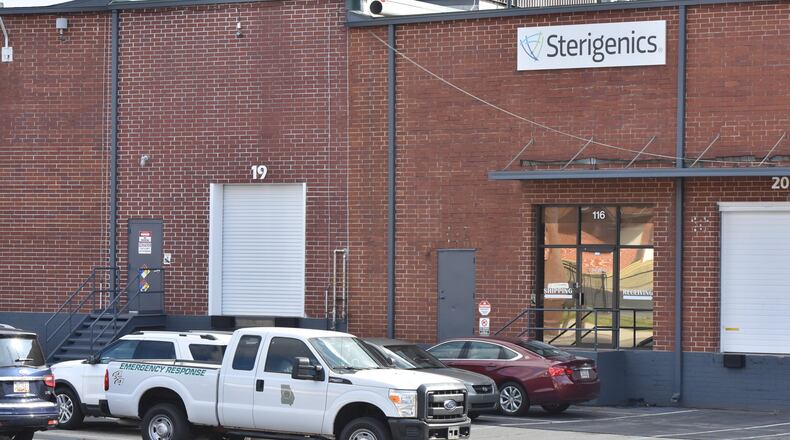Test results of air samples taken at about two dozen locations around a plant that uses ethylene oxide to sterilize medical equipment show levels of the carcinogenic gas increased after it reopened earlier this year.
That’s according to the study conducted by GHD, a company hired last year by Cobb County, Smyrna and the city of Atlanta to test air samples taken from locations within a five-mile radius from Sterigenics.
Sterigenics has for decades been permitted to use ethylene oxide in its sterilization process. The gas is classified by the Environmental Protection Agency as a human carcinogen.
The company became embroiled in controversy after a July 2019 story by WebMD and Georgia Health News reported potential increased cancer risks for residents in neighborhoods surrounding the plant, which is located off Atlanta Road near Smyrna.
The GHD report compared the amount of ethylene oxide in air samples taken Sept. 4-9, 2019, when Sterigenics closed to install improved pollution controls, with samples from July 7-16, after the plant reopened to help with the shortage of medical equipment amid the coronavirus pandemic.
According to the report, the levels of ethylene oxide measured in the air while the plant was closed hovered anywhere from around .01 to .3 micrograms per cubic meters in some areas. The levels jumped between 1 and 3.5 micrograms per cubic meter in the July tests.
The federal Environmental Protection Agency has said long-term exposure to anything higher than its threshold of 0.02 micrograms per cubic meter presents an unacceptable health risk resulting in more than 100 cancer cases per million people.
The GHD report was presented last month to the Air Quality Oversight Committee, which is comprised of local elected and public health officials, emergency managers and local stakeholders.
Dyron Hamlin, a chemical engineer with GHD, told the committee that the higher ethylene oxide levels were consistent with those that are naturally occurring in the air or caused by human activity. He also said they could not be exclusively tied to Sterigenics, according to Georgia Health News.
Smyrna Mayor Derek Norton, who sits on the committee, said he believes the data presented by GHD was accurate, but said he’ll defer to “people who are smarter than me to interpret what it means.”
“I think that any poison in the air is too much, and I’ll keep doing everything I can to keep everyone safe," he said.
Sterigenics declined to comment for the story, but referred The Atlanta Journal-Constitution to a fact sheet on its website that says recent improvements at its plant have further reduced ethylene oxide emissions. The fact sheet also cites tests conducted July 8 and July 14 by the Georgia Environmental Protection Division that show ethylene oxide emissions measured about one mile from Sterigenics were lower than what GHD reported.
Cobb County Chairman Mike Boyce declined to comment on Sterigenics due to its pending lawsuit against the county over restrictions placed on the plant’s operations. However, Boyce said that now that the report is done, it’s up to the state to enforce its ethylene oxide emissions standards.
“This is an issue for the state EPD to address, not the county,” he said.
Janet Rau and Tony Adams, Cobb residents who are members of the Stop Sterigenics Georgia, don’t agree with GHD’s reluctance to tie the ethylene oxide increase to the plant. They both say GHD’s numbers show the plant’s reopening is responsible.
Rau said when the testing began in September, about 80 percent of the air sampled returned non-detectable levels of ethylene oxide. Preliminary results viewed by the committee for air samples collected in August show all they all had detectable levels of the gas, she said.
“That in it of itself shows there’s a greater amount of ethylene oxide in the air within our community when Sterigenics reopened,” she said.
Stergenics argues on its website that ethylene oxide is a naturally-occurring gas that’s produced by the human body, plants, exhaust from vehicles, agriculture chemicals and gas grills. It’s needed as the only method of satisfying “FDA-approved sterility validations for many critical medical devices,” according to the company.
Adams said he would like to see testing done for at least 30 days, the same time frame used by officials studying Stergenics’ use of ethylene oxide emissions from its now-shuttered facility in Willowbrook, Illinois. Adams also said Sterigenics continues to rely on its argument that its use of ethylene oxide is not harmful to surrounding communities.
“They just keep repeating the same narrative," he said.
About the Author
Keep Reading
The Latest
Featured



